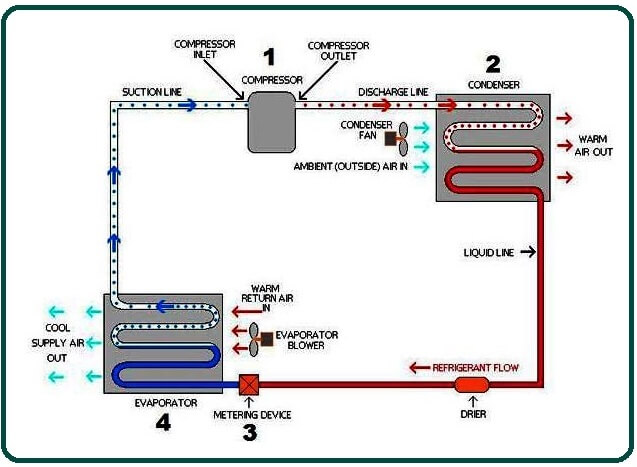Air Conditioning & Ventilation
Air conditioning and ventilation are fundamental aspects of HVAC (Heating, Ventilation, and Air Conditioning) systems, playing a crucial role in thermal comfort, indoor air quality (IAQ), and energy efficiency. Air conditioning is the process of controlling temperature, humidity, and air purity within a space by utilizing refrigeration cycles or heat pumps. The refrigeration cycle involves compression, condensation, expansion, and evaporation of refrigerants to remove heat from indoor air and expel it outside. Various air conditioning systems, including direct expansion (DX) units, variable refrigerant flow (VRF) systems, chilled water systems, and packaged rooftop units, are designed to suit different applications in residential, commercial, and industrial settings. Advanced air conditioning systems integrate high-efficiency compressors, inverter technology, and multi-stage filtration to optimize energy consumption while improving air filtration and dehumidification, reducing pollutants such as dust, allergens, and volatile organic compounds (VOCs).

Ventilation, a critical part of HVAC design, ensures the continuous exchange of indoor and outdoor air to maintain fresh air circulation, remove contaminants, and regulate moisture levels. Ventilation can be natural, relying on airflow through windows, vents, and pressure differentials, or mechanical, using fans, ducts, and air handling units (AHUs) to actively move air. Mechanical ventilation systems include exhaust ventilation, supply ventilation, and balanced ventilation setups, each designed to manage airflow effectively. Heat Recovery Ventilators (HRVs) and Energy Recovery Ventilators (ERVs) enhance system efficiency by reclaiming heat and moisture from outgoing air, reducing energy losses and maintaining humidity control. Proper ventilation is essential for preventing issues such as mold growth, carbon dioxide (CO₂) buildup, and indoor air stagnation, ensuring compliance with ASHRAE (American Society of Heating, Refrigerating and Air-Conditioning Engineers) standards for air quality and ventilation rates.
The integration of air conditioning and ventilation in modern HVAC systems ensures efficient airflow distribution, temperature regulation, and humidity control, creating a comfortable, healthy, and energy-efficient indoor environment. Advanced HVAC solutions use demand-controlled ventilation (DCV), variable air volume (VAV) systems, and zoning controls to optimize airflow based on occupancy and environmental conditions. Whether in residential, commercial, or industrial applications, a well-designed HVAC system with intelligent climate control, high-efficiency filtration, and optimized ductwork ensures superior thermal comfort, energy savings, and improved indoor air quality.
